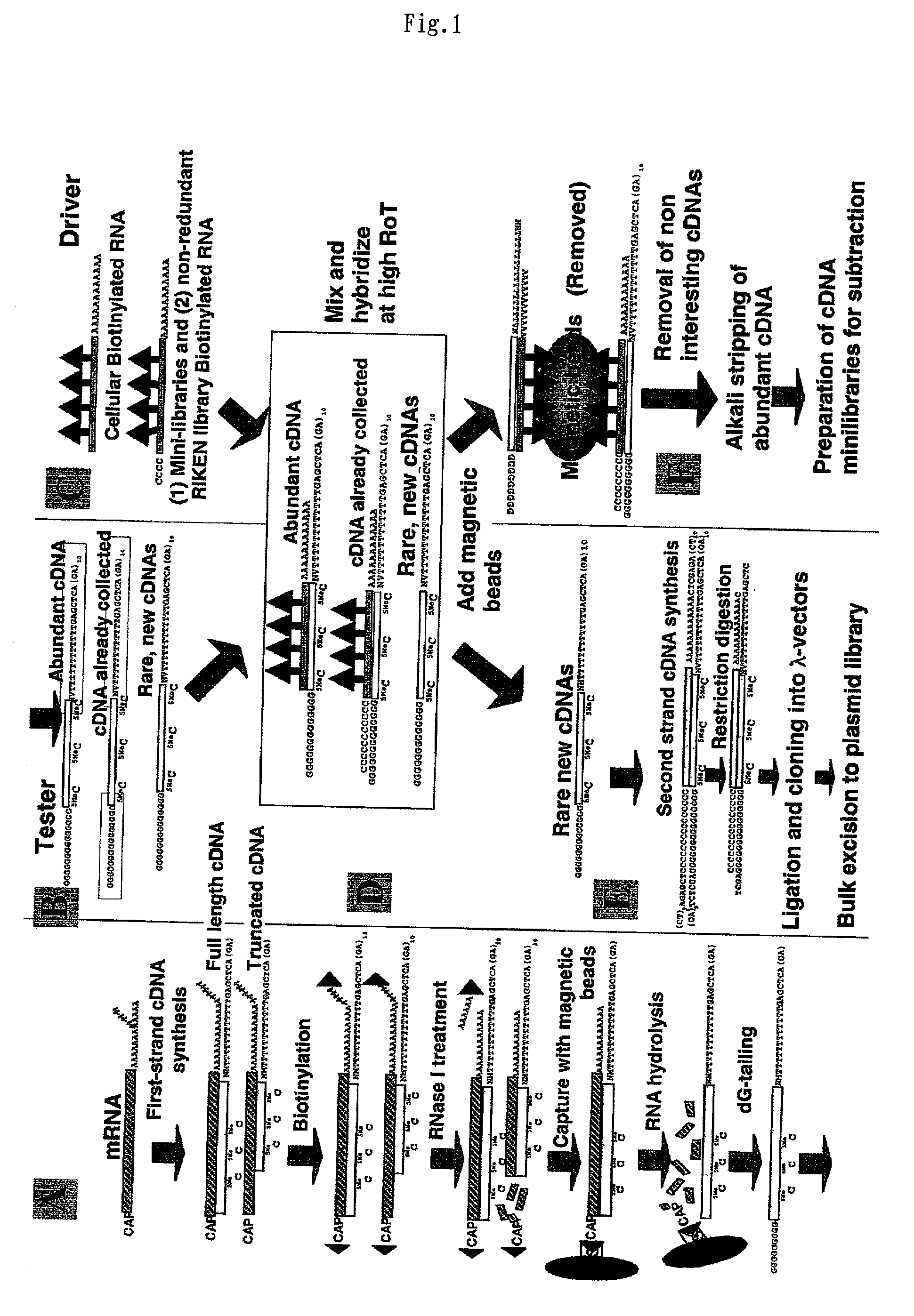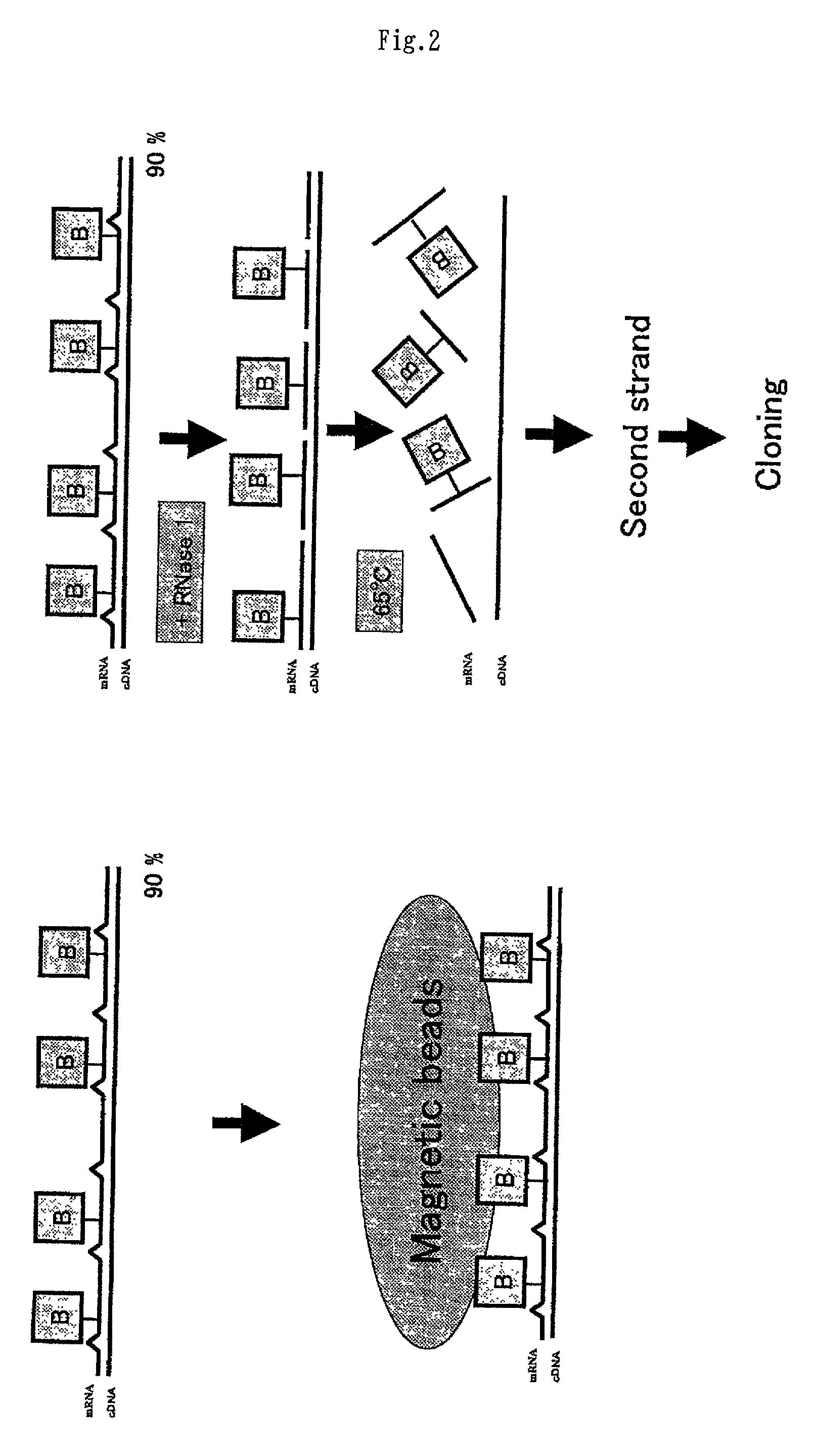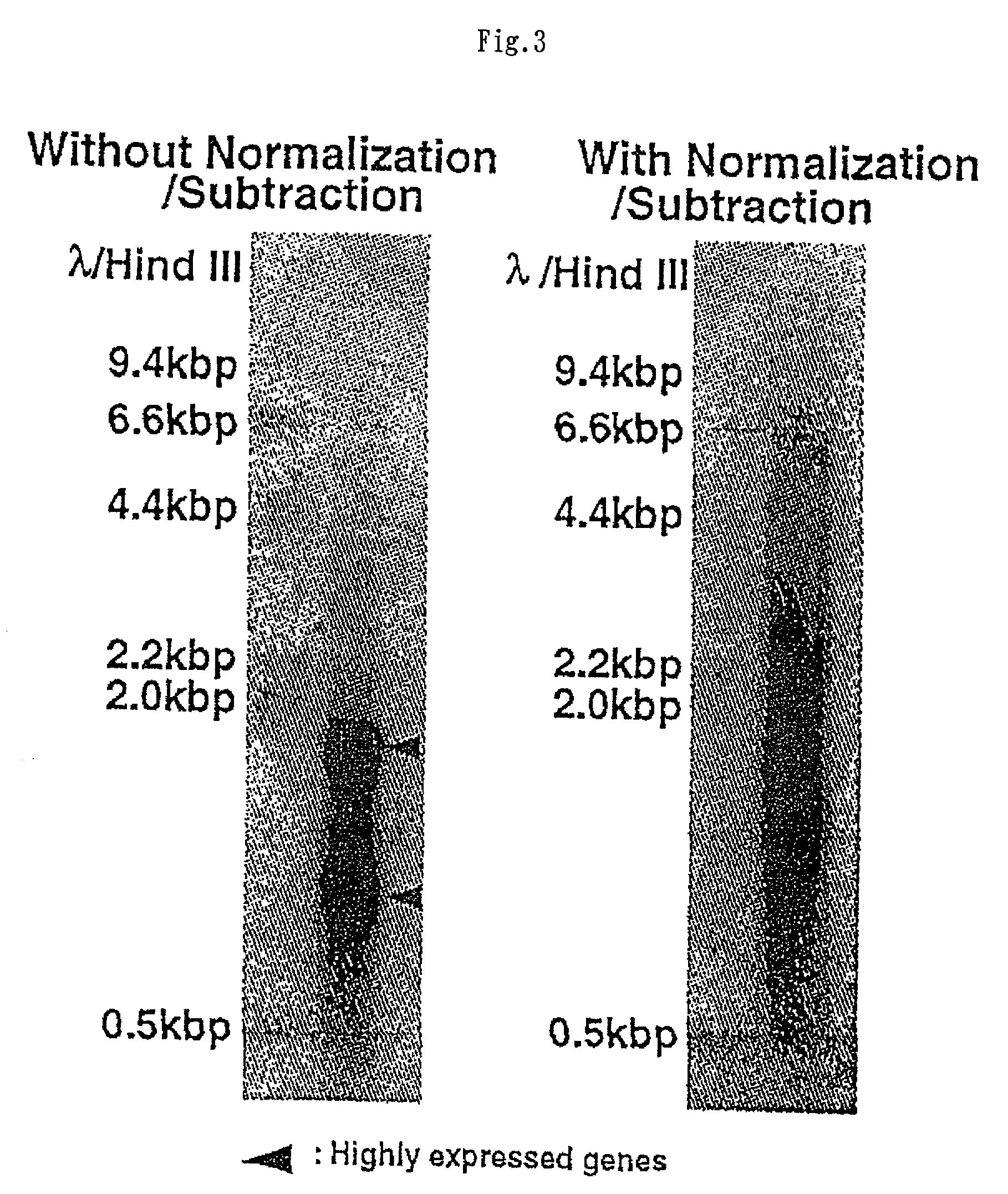Method of preparing normalized and/or subtracted cDNA
a cdna library and library technology, applied in the field of preparing cdna libraries, can solve the problems of introducing size bias, requiring more cloning and amplification, and requiring long preparation tim
- Summary
- Abstract
- Description
- Claims
- Application Information
AI Technical Summary
Benefits of technology
Problems solved by technology
Method used
Image
Examples
example 2
[0194] Lung and Liver Tissues
[0195] cDNA normalized / subtracted libraries (and minilibraries) were prepared from lung and liver tissues in the same manner as described in Embodiment 1 for brain tissue, with the exception that a primer containing an XhoI site
1 (5'-(GA).sub.8ACTCGAG(T).sub.16VN-3') (SEQ ID NO: 4) and an SstI-containing primer 5'-(GA).sub.9GAGCTCACTAGTTTAATTAA-ATTAATC.sub.11-3' (SEQ ID NO: 3)
[0196] employed for mRNA extracted from liver and lung tissues. The other steps were the same as those described for brain tissue.
example 3
[0197] Efficiency of Removal in Driver / Tester Capture
[0198] Preparation of an RNA Template
[0199] A pBluescript plasmid containing a 5 Kb fragment of reeler cDNA (Hirotsune et al., Nature Genetics, 1995, May, 10(:77-83)) was employed.
[0200] From 2.5 .mu.L of template plasmid DNA (cleaved at the NotI restriction site), RNA was transcribed in vitro under standard conditions: 20 .mu.L of Gibco-BRL 5.times.buffer, 5 .mu.L of rNTPs (10 mM each), 5 .mu.L of 0.1M DTT, and 20 Units of T7 RNA polymerase at a final volume of 100 .mu.L. The reaction was conducted by incubation at 37.degree. C. for 3 hours. Also, 2 .mu.L of alpha.sup.-32 P-rUTP was added in the reaction to label the RNA.
[0201] Subsequently, 20 units of RQ1 DNase (Promega) were added to remove trace quantities of template DNA (plasmid) and the sample obtained was incubated at 37.degree. C. for 15 min. NaCl was added to the sample to a final concentration of 250 mM. The sample obtained was deproteinated once with phenol (equilibra...
example 4
[0208] Methods of Evaluating the Invention
[0209] Reduction in the Frequency of Abundant cDNAs
[0210] Several normalized / subtracted cDNA libraries were prepared from pancreas tissue in the same manner as described above for brain tissue using RNA drivers and minilibraries derived from the rearrayed nonredundant cDNAs prepared in the above-described embodiments to reduce unnecessary resequencing of clones already present.
[0211] The second-strand cDNA from a standard pancreas cDNA library (without normalization / subtraction) was compared to its normalized / subtracted counterpart (FIG. 3). The normalized / subtracted cDNA was prepared in a single normalization / subtraction step. Normalization was performed at RoT=10, and subtraction was conducted using a set of minilibraries prepared as set forth above at RoT=20 (subtraction can be performed at an RoT value of up to around 500) each of which contained 1,000 to 2,000 redundant mostly abundant clones from liver, lung, brain, or placenta tissue....
PUM
| Property | Measurement | Unit |
|---|---|---|
| Fraction | aaaaa | aaaaa |
| Fraction | aaaaa | aaaaa |
| Fraction | aaaaa | aaaaa |
Abstract
Description
Claims
Application Information
 Login to View More
Login to View More - R&D
- Intellectual Property
- Life Sciences
- Materials
- Tech Scout
- Unparalleled Data Quality
- Higher Quality Content
- 60% Fewer Hallucinations
Browse by: Latest US Patents, China's latest patents, Technical Efficacy Thesaurus, Application Domain, Technology Topic, Popular Technical Reports.
© 2025 PatSnap. All rights reserved.Legal|Privacy policy|Modern Slavery Act Transparency Statement|Sitemap|About US| Contact US: help@patsnap.com



